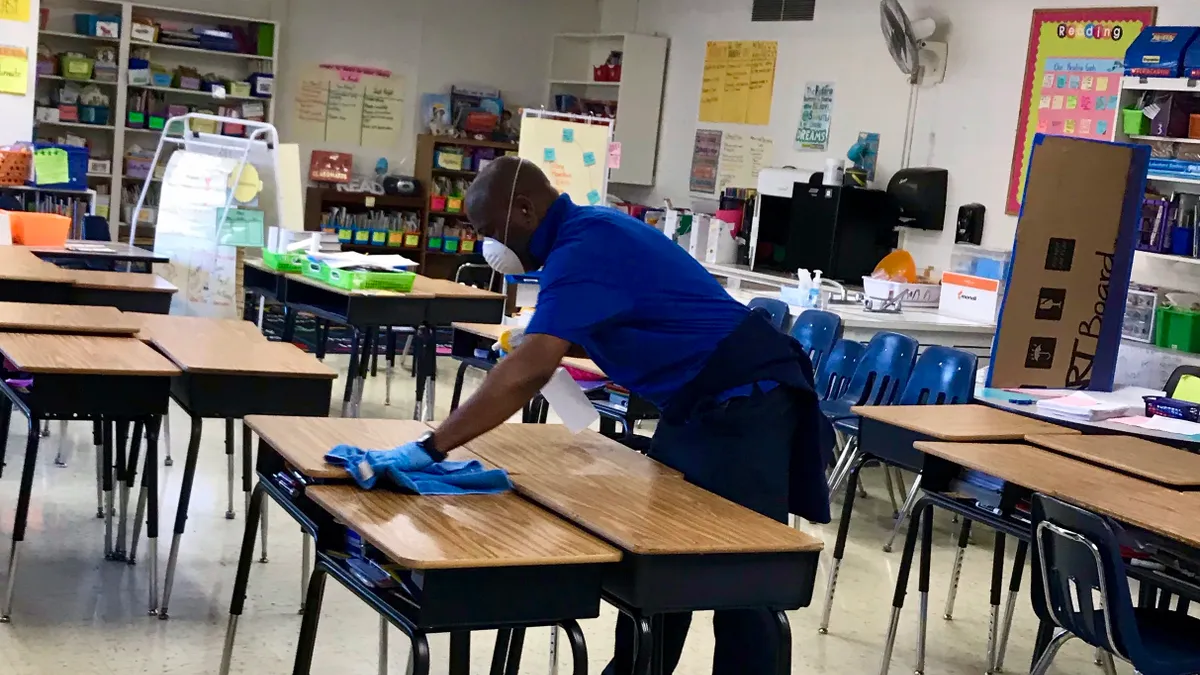Dive Brief:
- Target, Walmart, Kohl's and JCPenney are among the brands running back-to-school campaigns that empathize with, but do not dwell on, pandemic-related uncertainty, according to a new study from Ace Metrix.
- Brands are using phrases like "however you go back" alongside footage of people in both physical classrooms and remote learning environments. The ads highlight pandemic-driven trends like contactless pickup and delivery, while keeping the mood cheerful and energetic.
- This year's batch of back-to-school campaigns received a similar response to last year's based on Ace Metrix's Ace Score, a metric measuring people's perceptions of advertising. In surveys, some parents said they appreciated that brands addressed the ambiguity of the current academic year. A smaller percentage expressed negative feelings about back-to-school ads because of the pandemic.
Dive Insight:
Ace Metrix's latest data suggests that brands have tried to take a balanced approach to marketing around an uncertain back-to-school period, using positive messaging that addresses tough pandemic realities without making those obstacles the focus of their campaigns.
Kohl's "Buy Now" ad earned high marks for its upbeat colorful and energetic spot, per the analysis. The ad evoked positive reactions for its perceived authenticity and value among a smaller group of consumers. Attention-grabbing visuals drove 77% of viewers to say that the ad increased purchase intent.
Target also relied on bright colors in its "Learning Mode" spot that largely tuned out the school challenges this year. The big-box brand's product-focused spot made 67% of parents feel positive purchase intent after watching it, per Ace Metrix.
On the other hand, JCPenney's "The Rhythm" and "Here to Help" showed families getting ready for the unique school season this year and resonated well with parents, earning strong scores related to attention and likeability. Walmart's "Back to School – Free 2 Day Delivery" addressed the uncertainty of physical schooling and home learning and was the only spot to show a kid wearing a mask. It resonated well with parents and was ranked as likable and relevant, per the study.
For marketers, the back-to-school marketing season is typically a busy one filled with lighthearted messaging around getting prepared to return to classrooms. This year, brands are facing a different scenario where depicting something as simple as returning to school or showing kids gathered in crowds can be perceived as insensitive due to the health risks associated with the novel coronavirus.
For brick-and-mortar retailers, the atmosphere is tougher still because they are dealing with sales declines — and bankruptcy proceedings in some cases — as stores remain closed and consumers remain reticent to return to in-person shopping.
There is similar uncertainty around which products parents and students will be looking to purchase this year. In California, the nation's most populous state, the majority of schools will remain virtual full time, which means that parents may not need things like school shoes and gym gear or supplies that they already have around the house. On the other hand, some may look to purchase desks and decor to spruce up a student's studying area. As parents await details from their districts, last-minute purchasing could increase.
Brands with strong e-commerce businesses could fare well during the back-to-school period. The National Retail Federation forecasts that families with children attending K-12 will spend an average $789.49 per household in 2020 to total $33.9 billion, up from $26.2 billion last year and breaking the 2012 record of $30.3 billion.














